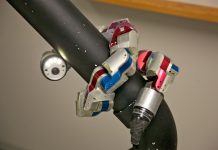Google DeepMind’s artificial intelligence has learned to mimic human voice realistically. Unlike other automated voices that are created from words, recorded and repeated in a sequence to make the sentences, WaveNet generates human-like voice by directly modeling it from audio waveforms.
Here’s something that you didn’t know Google’s voice assistant. The sound is not coming from pre-recorded words, instead, the assistant’s voice is the result of analyzed waveforms of human voice being converted into digital voice. So the voice and speech produced as a result never came from the vocal cords. Google tested the audio output in both English and Chinese.
ALSO CHECK OUT: WHY TESLA MOTORS ROCKS WHEN IT COMES TO GREEN FUTURE
Google’s new human-voicing program WaveNet has become the most realistic text to speech program yet. As artificial technology is advancing, so is the need for computers to communicate with humans in a better way. This communication goes both ways, listening and talking as well. As for the listening part, the voice recognition software have become pretty accurate. However, mimicking human speech has always been a daunting task for software engineers.
For example Apple’s Siri, Microsoft’s Cortana, and Amazon’s Alexa; all of these AI programs understand voice commands easily but their voices are very digitalized and unrealistic. Hopefully, WaveNet powerful algorithms will change this scenario for Google Assistant.



















